The Government Just Cut New Jersey Beach Replenishment Funding — Our Beaches Are In Danger
Cape May County’s beaches, known for their beauty, tourism appeal, and environmental value, are now facing a serious threat.
For the first time in nearly three decades, the federal government has allocated zero dollars toward beach replenishment in 2025.
The U.S. Army Corps of Engineers confirmed the change, which has already led to the cancellation of scheduled sand replenishment projects in Avalon and Stone Harbor.
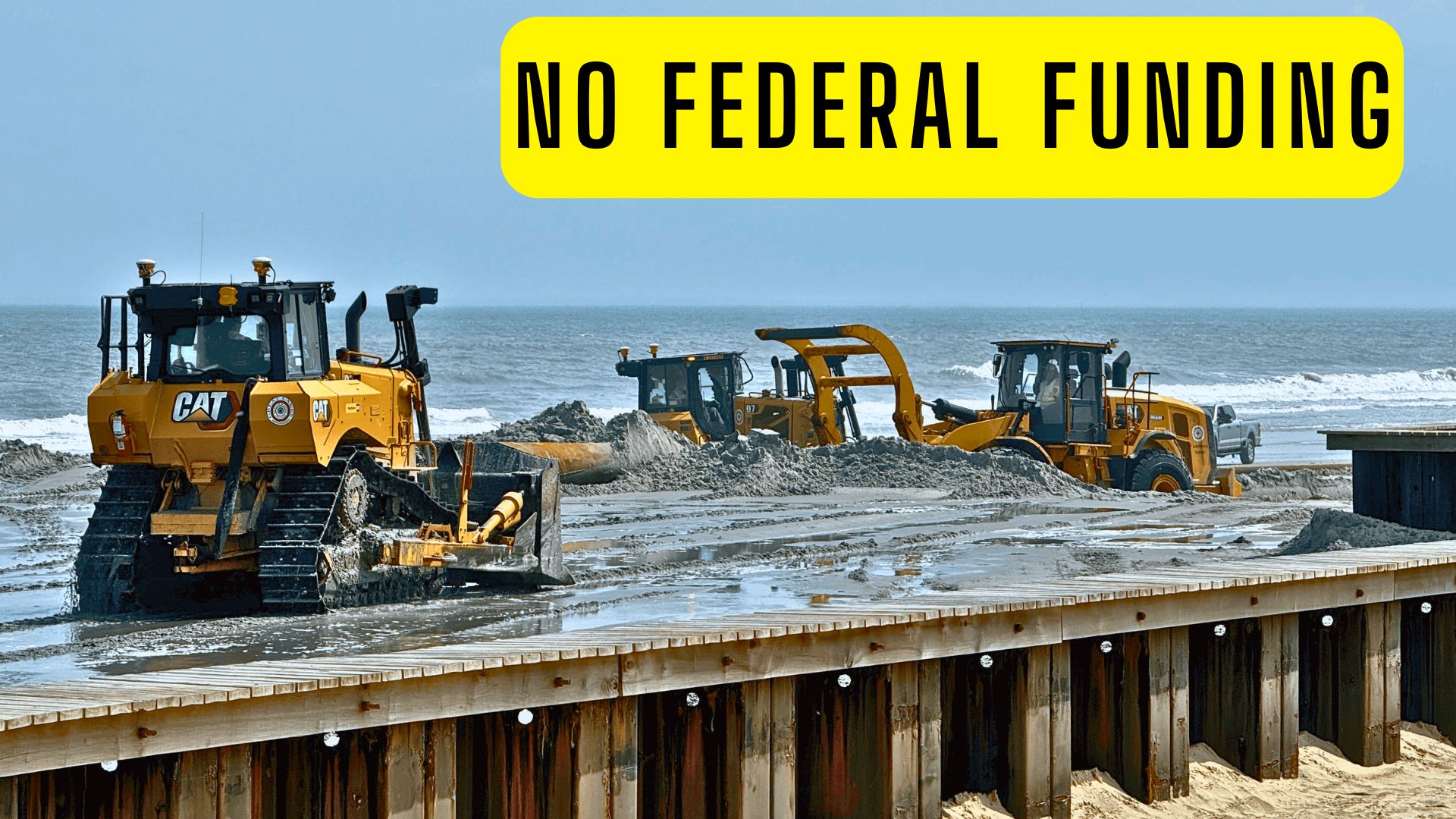
The Government Just Cut Jersey Beach Replenishment Funding
But the impact of this funding freeze could extend far beyond just a few towns. Without federal support, all of Cape May County may feel the consequences.
Beach replenishment is a process where sand is dredged from offshore and pumped onto eroded beaches. This helps restore lost shoreline and provides a buffer against storms and rising tides.
These projects have traditionally been a joint effort between the federal government, the State of New Jersey, and local towns.
Who Pays for What?
In New Jersey, beach replenishment projects are typically funded through a cost-sharing partnership between the federal government, the state, and local municipalities.
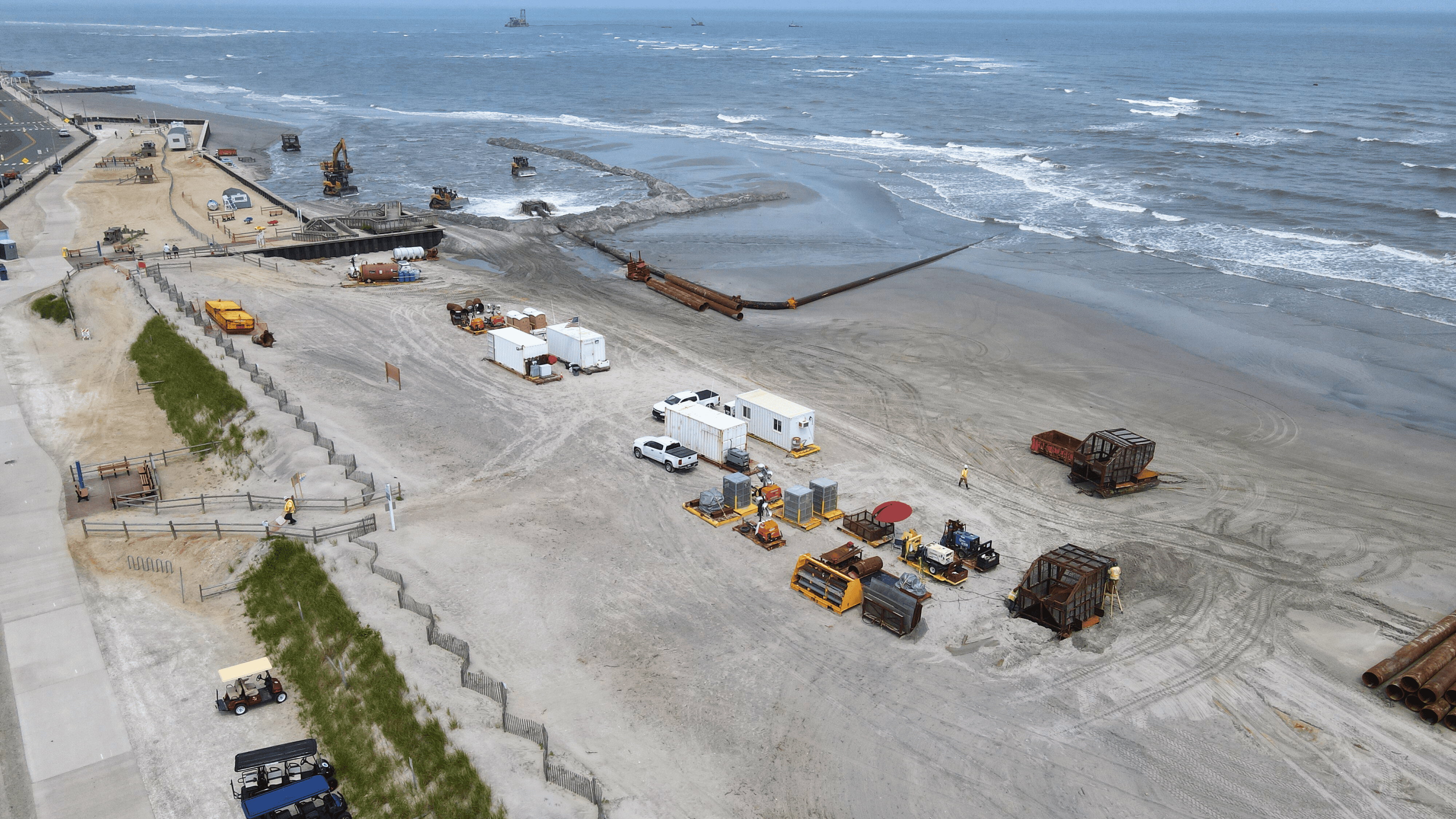 The U.S. Army Corps of Engineers usually covers about 65% of the total cost, using funds allocated by Congress through the Water Resources Development Act.
The U.S. Army Corps of Engineers usually covers about 65% of the total cost, using funds allocated by Congress through the Water Resources Development Act.
Also See: Fuel Spill at Wildwood Wawa Shuts Down Streets
The State of New Jersey contributes roughly 25% through the Department of Environmental Protection, while the remaining 10% is paid by the local municipality.
These projects include dredging sand from offshore and pumping it onto eroded beaches to protect against storms and support tourism.
Local towns often rely on tourism revenue or special tax districts to fund their share.
In some cases, especially when federal funding is delayed or unavailable, towns are forced to handle emergency sand-moving operations on their own, which can be expensive and temporary.
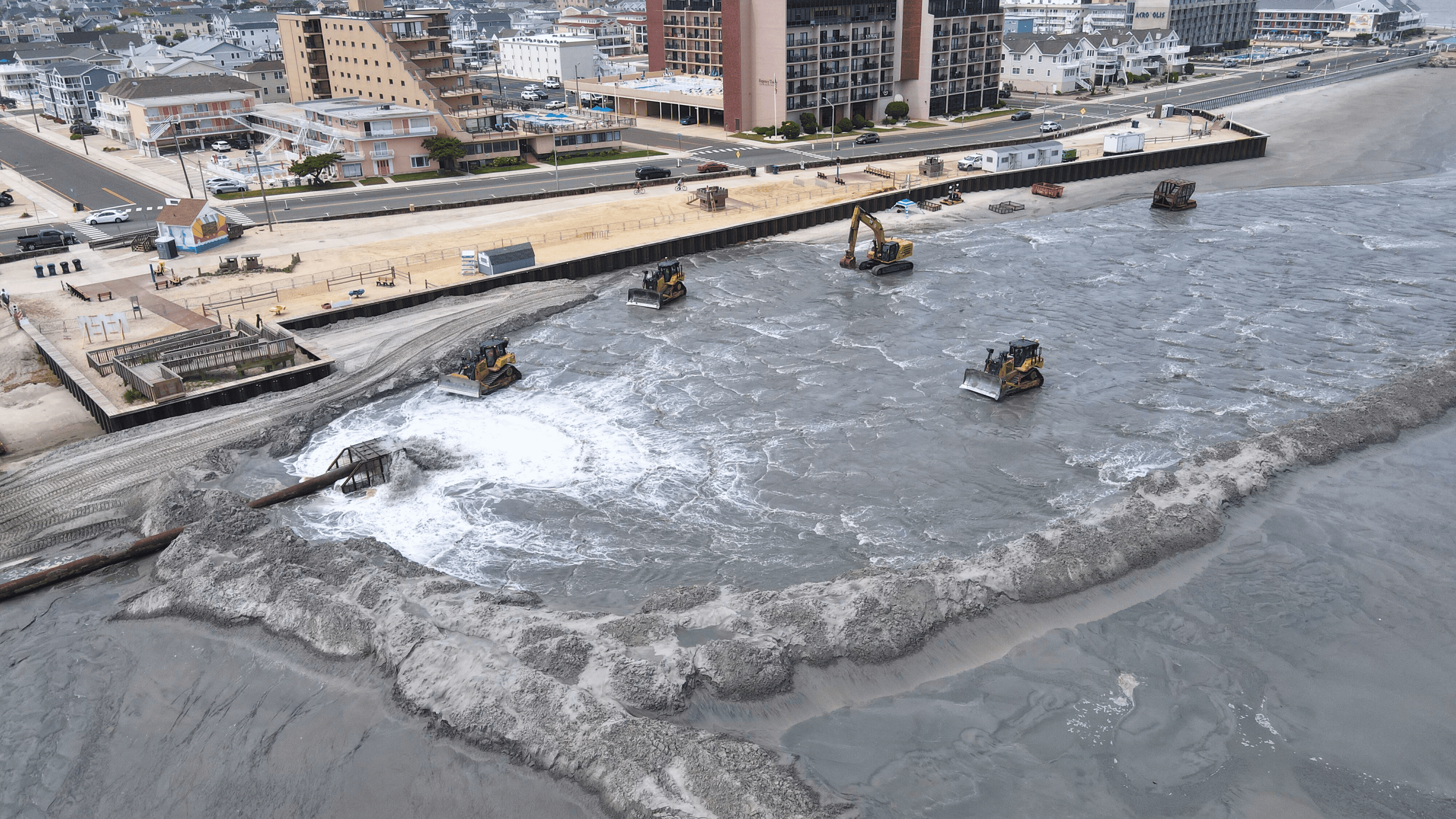
Without this three-way partnership, many shore towns would struggle to afford large-scale beach protection projects on their own.
Projects in Cape May County Now at Risk
Cape May County relies on scheduled nourishment projects to keep its beaches in shape. Towns like Ocean City, Sea Isle City, Strathmere, and Cape May City all have long-term agreements for periodic replenishment.
Avalon, one of the hardest-hit towns this year, had to take matters into its own hands. With no outside funding, the borough moved 39,000 cubic yards of sand from the north end to the more severely eroded southern beaches. The cost of this emergency fix came out of local funds and only offers a temporary solution.
Looking ahead, several replenishment projects are on the schedule for 2026. But with this year’s funding completely eliminated, the future of those projects remains uncertain.
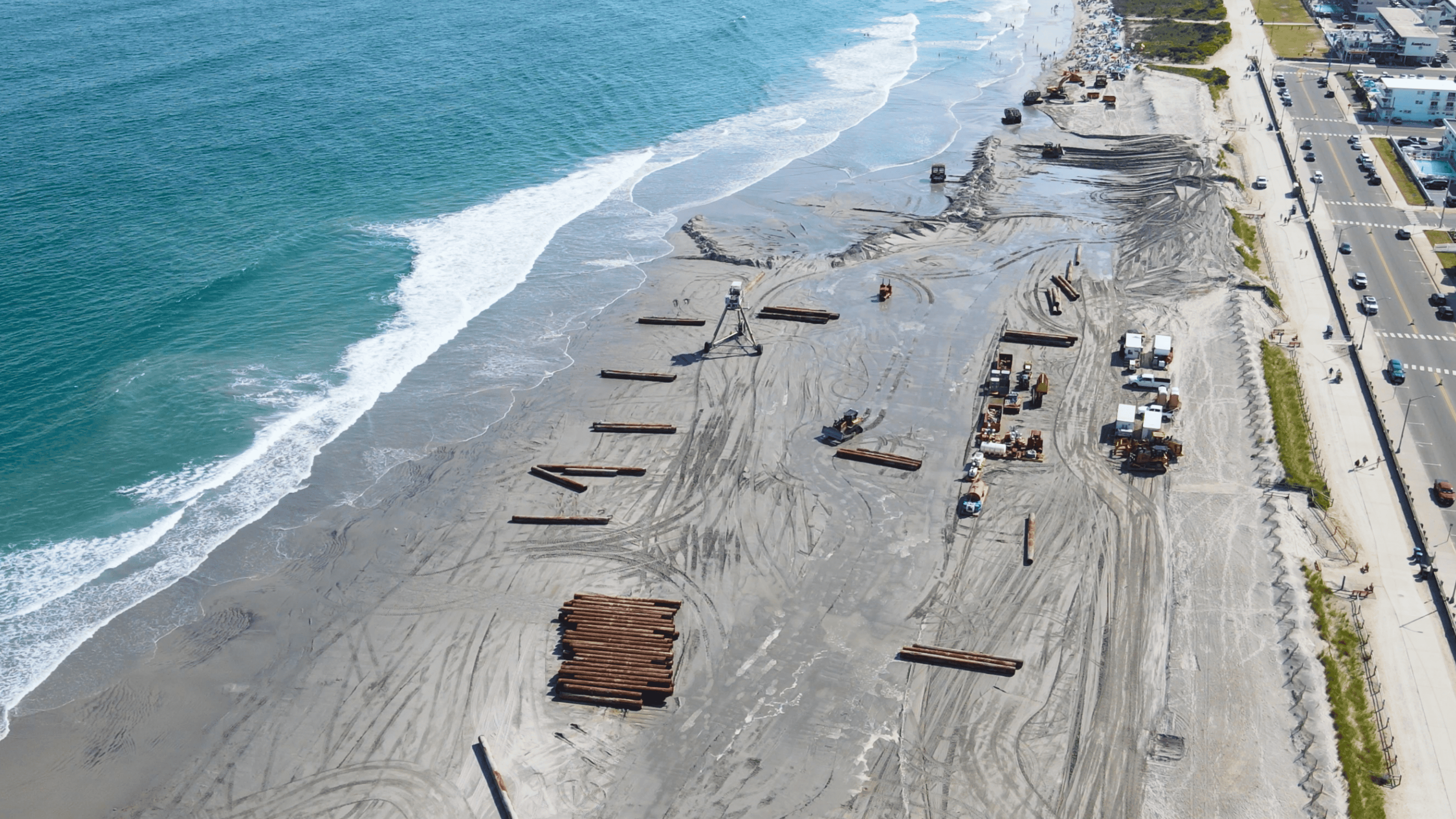
North Wildwood Beach Replenishment Project Equipment on the beach
Impact on Tourism and the Local Economy
Cape May County’s economy depends heavily on tourism.
In 2024, New Jersey saw 50.6 billion dollars in visitor spending. A large portion of that came from Cape May County. Beach replenishment is not just about looks.
Without wide, healthy beaches, tourists have less space to enjoy, and homeowners are more exposed to storm damage.
If erosion continues unchecked, the result could be fewer vacation rentals, less foot traffic for boardwalk businesses, and declining real estate values.
This could hurt both seasonal tourism and long-term economic stability in shore towns.
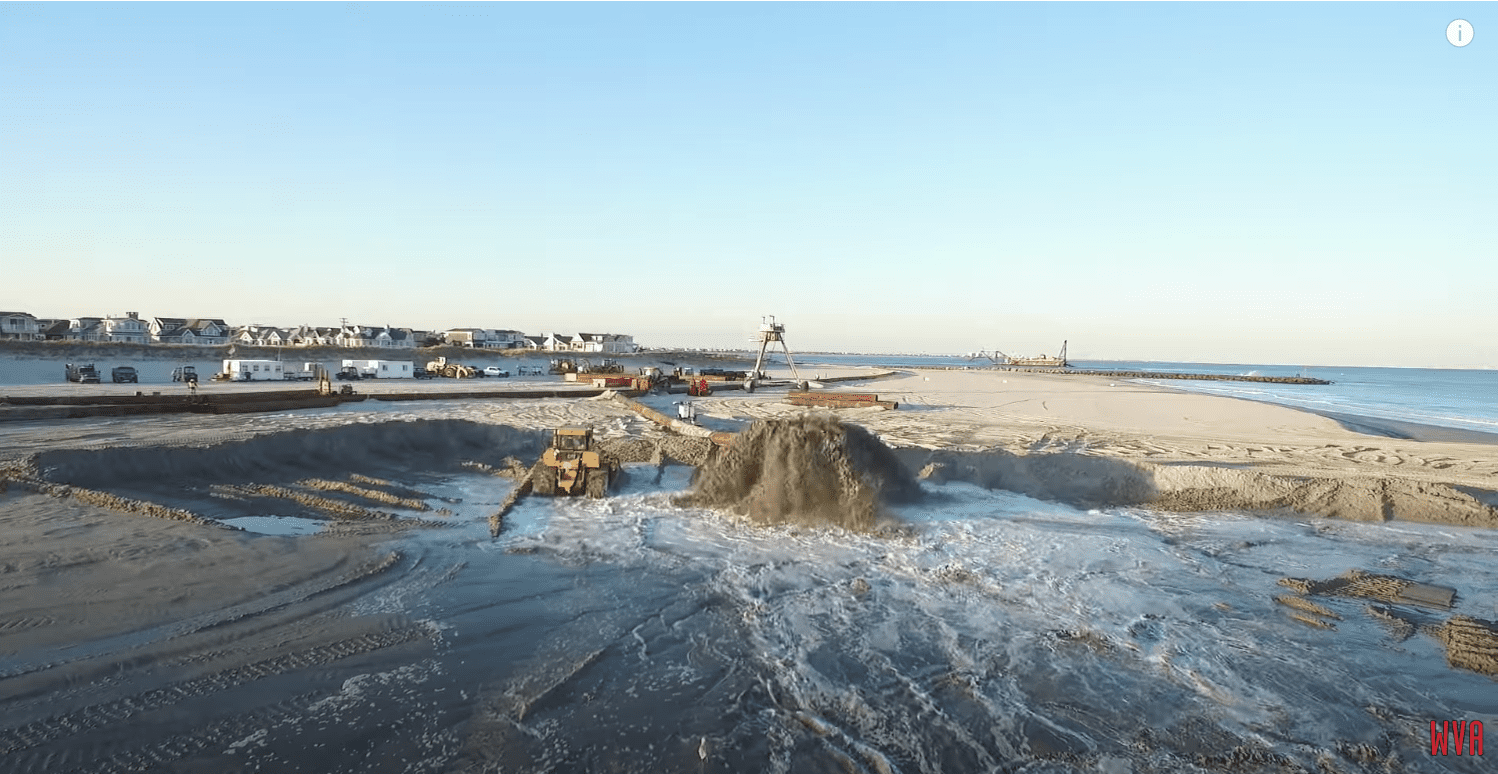
Many don’t look at these kinds of consequences, but they are real. For example. Russo’s Market in North Wildwood (9th and Ocean Ave).
Most people walk to Russo’s to grab a sandwich as they are walking to the beach. If there is no beach, then there is no walkable traffic, which means Russo’s doesn’t sell sandwiches. (Hopefully that makes the point)
But it’s more than just tourism that loses when we don’t have beaches.
Cape May County’s beaches also serve as vital habitats for protected wildlife.
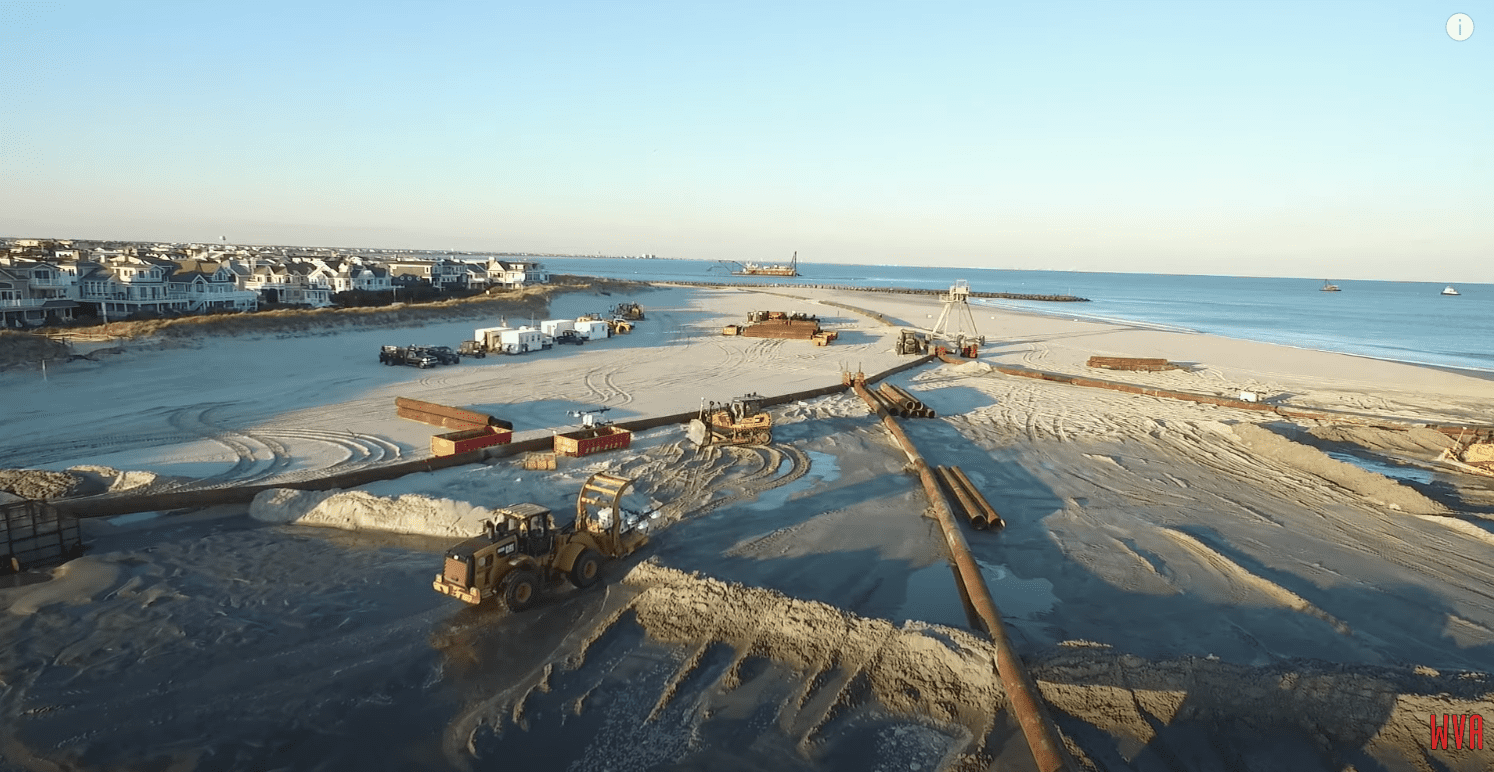
Avalon and Stone Harbor Beach Replenishment Underway
In Avalon, roughly one-third of the beach is set aside for nesting shorebirds like the piping plover. Without beach replenishment, these nesting areas are at greater risk from high tides and storm surges.
Environmental groups have raised concerns that the loss of replenishment funding could undo years of conservation efforts.
What Happens Next?
U.S. Representative Jeff Van Drew, who represents Cape May County, says he is pushing for replenishment funds to be restored in the 2026 federal budget. He is also calling for longer-term solutions to protect the shoreline, including more sustainable and cost-effective strategies.
In the meantime, Cape May County municipalities must weigh the costs of self-funding emergency sand work. These types of projects are expensive, limited in scale, and not a long-term replacement for federal nourishment programs.
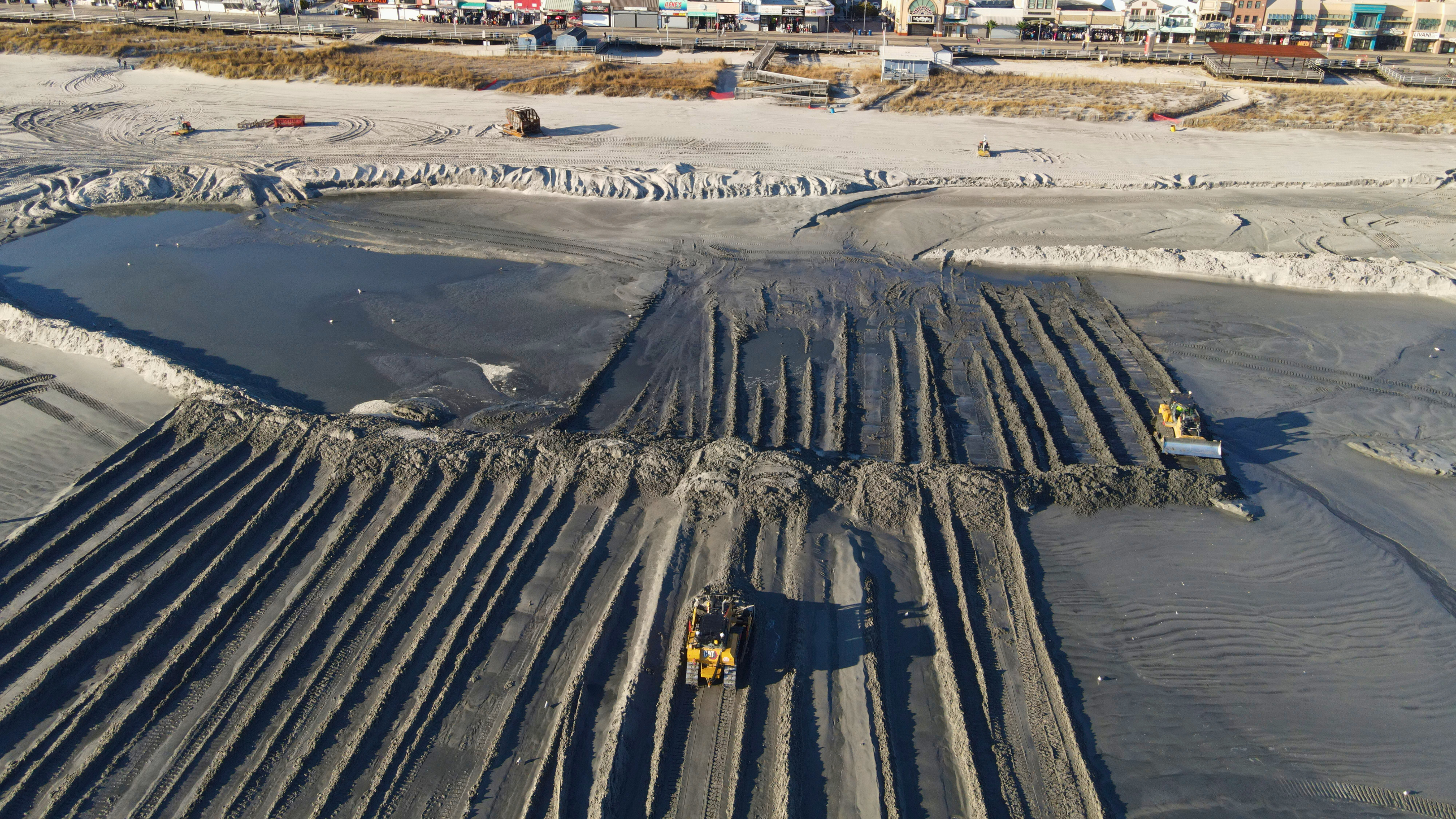
It is a crucial part of the economy, a defense against storms, and a home for wildlife.
With no federal replenishment dollars coming this year, the responsibility to preserve this treasured resource now falls squarely on the shoulders of local leaders and residents.
Below is a video showcasing the North Wildwood emergency beach replenishment that happened last summer. Before you watch it please consider subscribing to our Youtube Channel.
